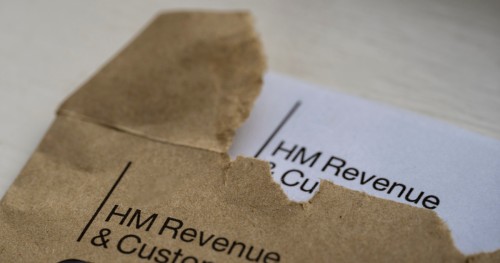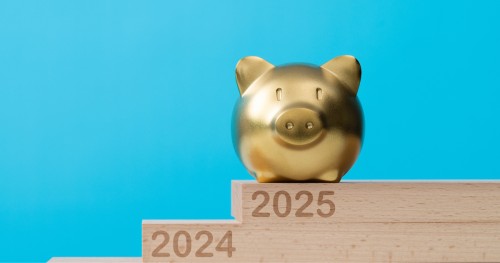Tax rates and allowances 2023/24 for freelancers

As a new tax year begun on 6th April, freelancers need to be aware of the updated tax rates and allowances for 2023/24. This will be useful for freelancers to calculate their take home pay after tax, VAT, and more. Whether you are sorting out your taxes on your own, or via an accountant, you’ll need to know how much you are expecting to save and spend as a freelancer.
What will I be taxed as a freelancer for 2023/24?
Personal allowance for income tax
As freelancers may already know, the personal tax allowance was frozen at £12,570 in 2022/23 and will continue at this amount into the 23/24 tax year. Therefore, any earnings from your freelancing job which amount to over £12,570, you will pay income tax on.
The income tax bands vary between England, Wales, Northern Ireland, and Scotland and is broken down as below.
The income tax band for freelancers working in England, Wales and Northern Ireland is:
Taxed 20% of a basic rate for those earning between £12,571- £50,270.
Taxed 40% tax for freelancers earning a higher rate between £50,271- £125,140.
Taxed 45% for an additional rate income for freelancers earning £125,140 and over.
For freelancers living and working in Scotland, your tax band threshold is:
Taxed 19% for a starter rate earning between £12,571-£14,732.
Taxed 20% for a basic rate earning between £14,733 to £25,688.
Taxed 21% for an intermediate rate earning between £25,689-£43,662.
Taxed 42% for a higher rate between £43,663-£125,140.
Taxed 47% for allowances over £125,140.
Dividends allowance
The 2023/24 dividends allowance has decreased and will now stand at £1,000, leaving freelancers to pay tax on any dividend income over this amount. The following tax bands indicate what your tax rate on dividends for 2023/24 is.
The dividend basic rate is 8.75%.
The dividend higher rate is 33.75%.
The dividend additional rate is 39.35%.
Capital gains
Capital gains is where you are taxed based on any profit that you make when you sell an asset which has increased in value. The profit is highlighted as the gain from the asset so you will not be taxed for the price of the entire asset.
For the next tax year, you’ll pay a basic rate of 18% on your capital gains from residential property, and 10% on your capital gains from any other chargeable asset.
If you pay a higher rate, you will pay 28% on your capital gains from residential property, and 20% on any other chargeable assets.
The capital gains tax annual exempt amount is £6,000 for individual and £3,000 for trustee.
Corporation tax
Companies, including freelancers, with profits up to £50,000 will have a tax rate of 19%, and with profit over £250,000 will see their corporation taxes rise to 25%.
Value added tax (VAT)
The standard value added tax (VAT) rate is set at 20% for the 2023/24 tax year, with a reduced rate set at 5% and a zero rate at 0%.
You will need to register for VAT as a freelancer if your annual registration limit is £85,000. Whereas if your turnover falls below the threshold of £83,000, you can deregister.
National Insurance
The National Insurance Class 1A rate is now at 13.8% for this tax year. You must pay Class 1A National Insurance for any work benefits which you will give to you colleagues or try to claim yourself. This may include a company laptop, mobile, or a car.
The Class 1 threshold for 2023/24 states that you can only make deductions on earnings above the lower earnings limit. Here are the following thresholds for Class 1:
Lower earnings limit: £123 per week or £6,396 per year.
Primary threshold: £242 per week or £12,570 per year.
Secondary threshold: £175 per week or £9,100 per year.
Pensions
Freelancers who are looking at their pension savings can claim tax relief on their self-assessment for the money saved into your private pension. You can claim 20% up to the income you make and pay 40% tax, and 25% on any income where you pay 45% tax.
Individual Savings Accounts (ISAs)
For this tax year (23/24), £20,000 is the maximum amount that you can save into your ISA account.
There are 4 different types of ISA accounts including cash ISAs, Lifetime ISAs, stocks and shares ISAs, and innovative ISAs. You can save up to £20,000 in any of these accounts.
Inheritance tax
The Inheritance Tax Threshold (IHT) remains at £325,000 for another year.Freelancers who have anything over the £325,000 threshold will pay 40% in tax. If the will includes giving 10% or more in net value to charity, your inheritance tax will likely go down to 36%.
Stamp duty land tax
Stamp duty land tax (SDLT) for the 2023/24 tax year is as follows:
£0-£125,000 - 3%
£125,000-£250,000 - 5%
£250,001-£925,000 - 8%
£925,001-£1,500,000 - 13%



Comment
Log in or create your account to react to the article.